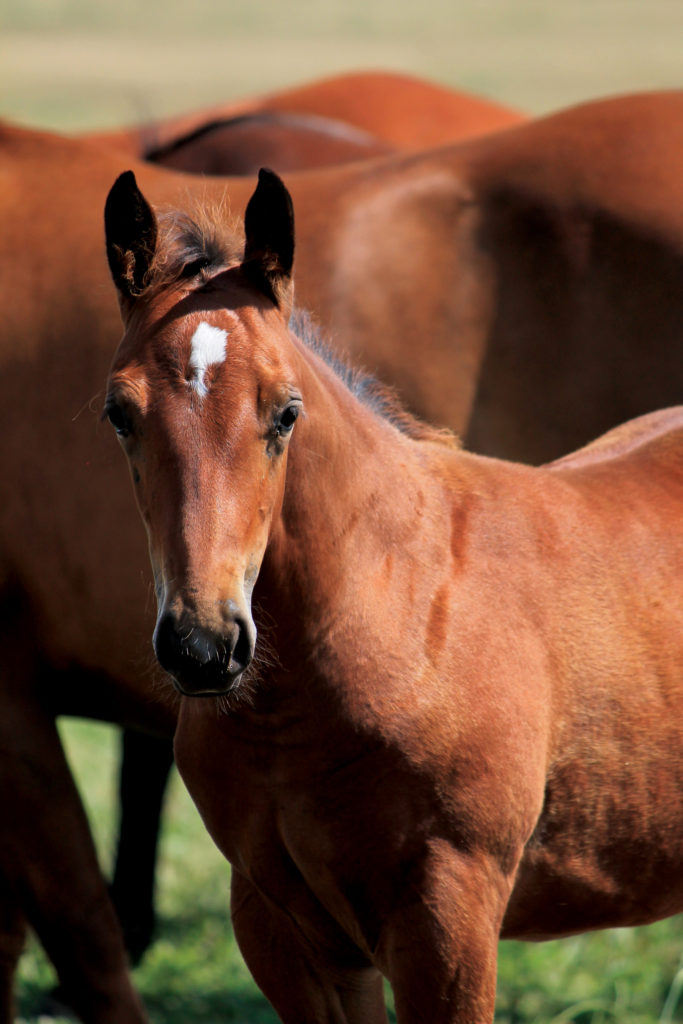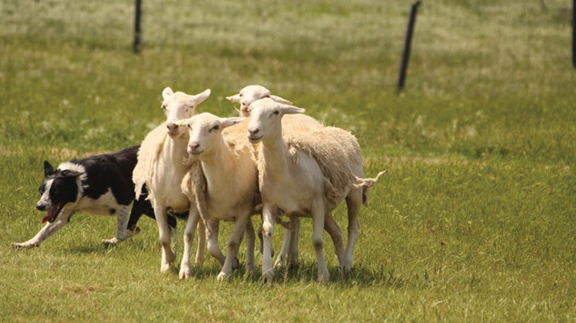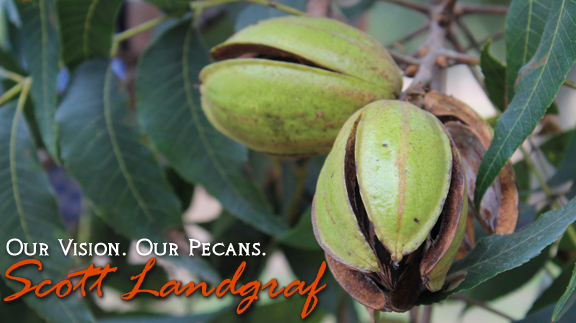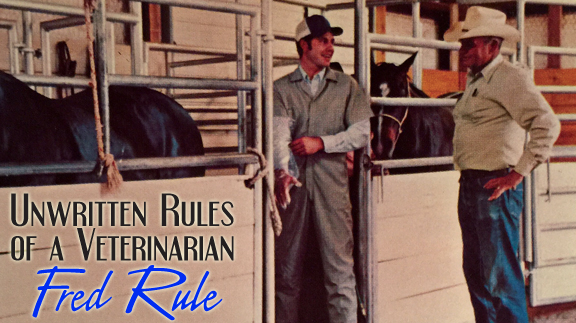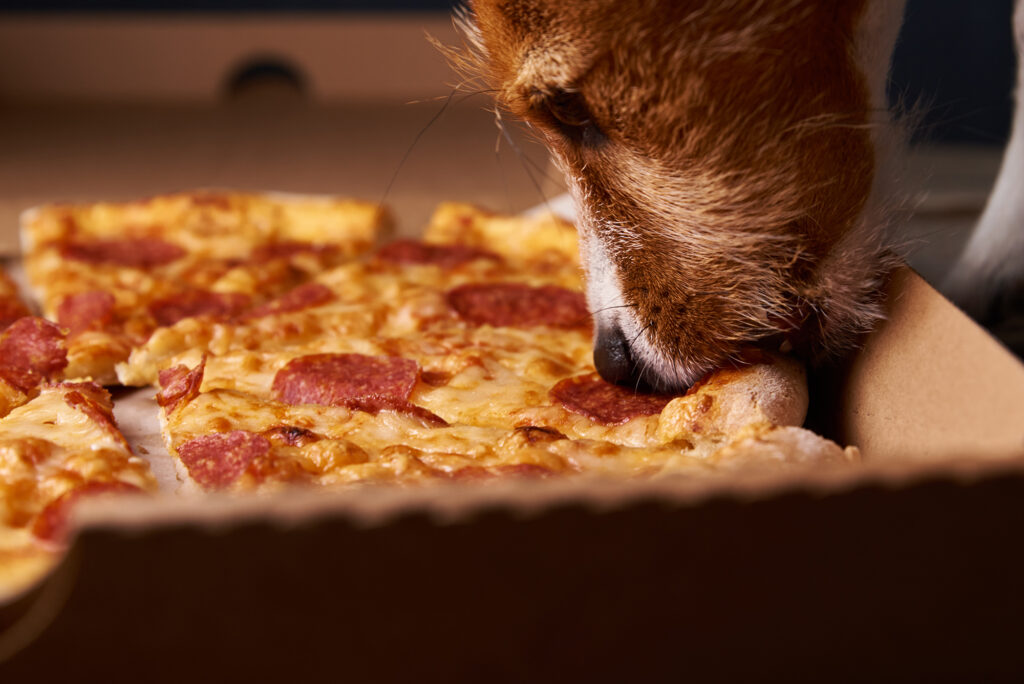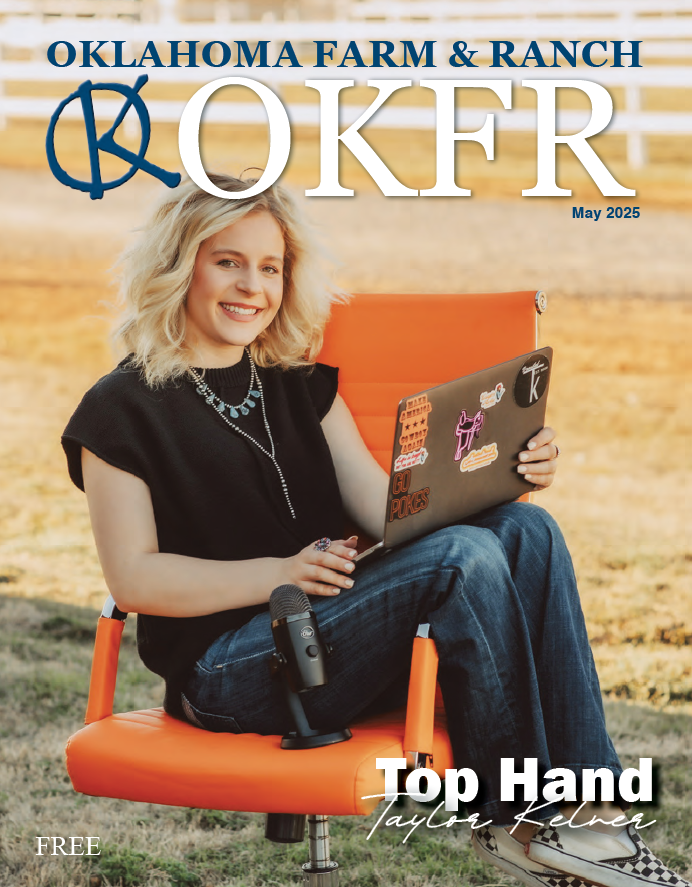Country Lifestyle
September 2017 Profile: Mike Armitage
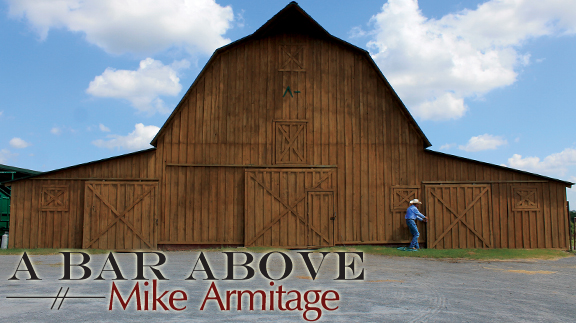
A Bar Ranch
By Laci Jones
It was a warm summer day with the relief of a slight breeze making the rolling bluestem grass sway. Horses and cattle gather under the few oak trees. The owner of this northeast Oklahoma ranch, Mike Armitage, continues to stay true to his traditions, remains actively involved in agricultural organizations and studies management techniques to improve livestock production.
“It is an exciting future for the beef industry,” Armitage explained. “For those who are always evolving and willing to step to that forefront, I feel as though they will be justly rewarded.”
Armitage was raised 10 miles north of Shawnee, Okla., in Meeker, Okla., on a cow-calf and alfalfa operation. His grandfather and father—Fred Frost and Vernon Lee Armitage—influenced Armitage from a young age.
“The biggest inspirations came from my father and grandfather who both found no hurdles too big to overcome, and their sheer determination and hard work made them undoubtedly the most impactful men in my life,” Armitage added.
Broad-based agricultural experiences through the FFA organization led him to attend Oklahoma State University after graduating from Meeker High School. There, he was on the Livestock Judging Team while pursuing a Bachelor of Science degree in agricultural economics with a farm and ranch management option.
“Through this ag economics degree, we were taught everything from appraisal to statistics, to monthly analysis of project costs,” he explained. “Many of those skills weren’t utilized until 10 to 20 years later in life.”
After graduating college in 1974, he landed a ranch management job at the McGuirk Hereford Ranch in Claremore, Okla. Armitage said he did not foresee him owning a ranch, but he knew he wanted to work in livestock production.
While working for the McGuirk family, he also owned a herd of purebred Hereford cattle. The Armitages had the opportunity to lease the operation and began purchasing the ranch after nine years of leasing.
“I was so blessed to end up owning the ranch that I managed out of college,” Armitage added.
A Bar Ranch
The owner of A Bar Ranch said the ranch is comprised of four divisions—A Bar Ranch Headquarters in Claremore, Okla., Rock Creek in Adair, Okla., Squaw in Pryor, Okla., and V Bar Ranch in Welch, Okla. Overall, the ranch operates 45,000 total acres throughout nine Oklahoma counties.
The headquarters in Claremore, Okla., was once a part of the original Cherokee Indian Allotment to Frank and Dora Rucker during the 1880s. Famous trick roper Will Rogers built a friendship with the Ruckers while working as a ranch hand. They were later involved in Will Roger’s traveling Wild West Show.
The ranch was owned by the McGuirk family then purchased by Mike and Martha Armitage in 1989. Armitage said the A Bar Ranch Brand has a unique history.
“The brand is an open ‘A’ or a rafter brand,” Armitage explained. “It was the Rucker brand from the 1880s. Since our name is ‘Armitage,’ we continued to use the ‘open A’ and added the bar to it in the early ‘90s.”
Cattle Production
“Our own fully-independent operation started in 1980,” Armitage explained. “Originally, it was just a registered Hereford operation but had the fortune of leasing a 7,800-acre ranch that adjoined [the headquarters].”
After analyzing their month-to-month expenses, the cattle producer recognized the need to eliminate 60 percent of annual cost of their cow-calf business from the winter season. To reduce annual costs, they stocked their adjoining ranch with purchased bred cows. Armitage Livestock was founded in 1989 for the marketing of commercial females.
They sold cows and calves that fall in their first annual Fall Gathering Sale in 1989 at the Southern Oklahoma Livestock Auction in Ada, Okla., later moving to the Joplin Regional Stockyards in Joplin, Mo. Always held the first Saturday in November, A Bar Ranch will have their Fall Gathering Sale at OKC-West for the fourth year. Armitage Livestock has evolved to present day marketing of 10,000 to 15,000 bred commercial females annually.
“When we market, we have to be looking around the corner and adding value to producers’ cow herds to remain competitive and in the forefront while offering more value for their dollar,” he added.
With productivity of his cow-calf herd at the utmost importance, Armitage said the most important element of production is fertility. In the early ‘90s, he selected only the females that were pregnant in the first 30 days of exposure through ultrasound aging of females.
“It was new on the scene at the time in the commercial industry,” he added. “It continues today as one of the most valuable tools in selection.”
Changing their female selection criteria resulted in an increase of pregnancy rates in the first 30 days of exposure from 55 percent in their first year to 87 percent in 2016.
“This, in my opinion, is the most important economic trait for a cow-calf producer,” Armitage explained. “The cow that calves first is the best cow in your cowherd and so are her daughters. It results in more uniformity in our calf crops, more predictable breed-ups and its selection.”
However, Armitage said their personal production cowherd continues to grow. In the ‘90s, he acquired bred tigerstripe cows, the F1 cross between Hereford and Brahman breeds, from a producer in south Texas and grazed them on his leased property. The producers said grazing these tigerstripe cows resulted in an additional 50 to 100 pounds of weaning weight, but other producers valued this breed as well.
In the mid- ‘90s, Armitage started retaining his own heifers from his purebred Hereford herd and began crossing with Hudgen’s Brahman Genetics, producing his own herd of F1 tigerstripes. He then crossed the tigerstripes with Angus bulls, producing the “super baldie Brangus,” which is one-quarter Brahman, one-quarter Hereford and one-half Angus cattle.
“We have found they are the most efficient, least maintenance cows for our eastern Oklahoma environment,” Armitage explained. “They consistently wean 600-pound, highly marketable Angus calves.”
They also retain heifer calves to breed for their own replacements and for auction to the public. This year, A Bar Ranch is retaining 400 head of cattle to help grow and replenish their cattle herd, he added.
Equine Production
In Armitage’s early years as a purebred cattle manager, the utilization of horses was imperative for heat detection of cattle prior to heat synchronization and the spring and summer breeding season.
“One-on-one sorting led me to an exceptional lineage of Hollywood Gold bred horses,” Armitage explained. “From that first purchase of brood mare horses in 1984, we bred horses to be durable, cowey, trainable and intelligent.”
Horses are bred to be used on the ranch each day, he added. They are bred for their size and structure, and evaluated for their skill set and trainability. The Armitages start and ride approximately 40 two-year-old horses each year.
Through their efforts to produce horses that meet these criteria, they market approximately 140 horses annually through two sales. The first sale, known as the Cowhorse Classic Sale, is held in mid-June. The second sale is held with their Fall Gathering Sale in November, bringing buyers from more than 15 states.
“I call it my ‘hobby out of control,’ but it’s been very rewarding as well,” he added. “We have had two AQHA Reserve World Champions and numerous ranch horse competition winners.”
The horse breeder is also a committee member on the AQHA Ranching Committee and an AQHA Ranching Heritage Breeder. In 2015, the Armitages began working with the Oklahoma Cattleman’s Foundation Intern Scholar Program, employing livestock production youth for the summer season.
“The same focus was developed through the AQHA and the Ranching Heritage Breeders Program with our first intern through AQHA in 2017,” he added.
These interns experience all aspects of the A Bar Ranch. The recipients of the 2017 Oklahoma Cattlemen’s Foundation Scholar Program internship and the 2017 AQHA Heritage Breeders internship are Kaden McCombs, Navajo, Okla., and Bradley Cornell, Claude, Texas, respectively.
“We are blessed to have this quality of ag youth involved here at the ranch,” he added.
A Family Business
Armitage met his wife Martha in Stillwater, Okla., where she was pursuing a bachelor’s degree in home economics communications at Oklahoma State University. They were later married in 1985. With being raised on a yearling cattle ranch in Welch, Okla., Martha is the A Bar Ranch accountant, advertising agent and sale catalog developer.
The Armitages have two sons—Merrit and Turner. Merrit, an Oklahoma State University alumnus, lives north of Pryor with his wife Michelle and son Myles. Merrit currently manages the Rock Creek division of A Bar Ranch through raising cattle and backgrounding yearling horses.
Turner graduated from Oklahoma State University in spring 2015. He married Sarah Coffey in August, where they also live on the Rock Creek division in Adair, Okla. Turner oversees colt starting, mare breeding and first-calf heifers.
While he is not a family member, Mark Hockensmith from Inola, Okla., is a “big asset” to the ranch’s daily activities, Armitage added. A Kansas State University alumnus, Hockensmith has worked for A Bar Ranch for 20 years.
Management and Traditions
Throughout the changes in the agriculture industry and new additions to the Armitage family, they continue to stay true to their roots. Since he was a youth, Armitage said livestock were managed on horseback.
“Through my walk in the purebred business, I managed cow herds horseback because of the influence and traditions that my 64 years have brought”
He added cattle properly handled horseback encourages their health and well-being. Another primary reason is purchased cattle can come from “all walks of life” from the extreme mismanaged to the properly managed. Managing while horseback provides consistency to the herd.
“In any time of the day, any place on the ranch— whether it’s rocky, rough, timbered— we have the skillset to gather and handle those cattle,” he added. “It always puts us in a position as not being a limiting factor to gather and manage.”
The Armitages are actively involved in several organizations including the National Cattlemen’s Beef Association, Oklahoma Cattlemen’s Association and the American Quarter Horse Association.
Armitage also said he hopes the future generations of A Bar Ranch and agriculture production are able to adapt to the ever-changing world of beef production while becoming leaders in both agricultural organizations and in their communities.
“I had an agriculture economics teacher explain to us, ‘If we didn’t marry it, or inherit it, that we might as well get the thought out of our mind to going home and survive in agriculture,” Armitage began. “I hope I am a living example that it’s not impossible. If you’re willing to make those sacrifices, work hard enough and have tolerance and durability, you could be very successful in agriculture.”
Niches within the agriculture industry are going to create a lot of opportunity for those willing to take those risks, he added. When asked about the risks the entrepreneur had taken, he replied, “Every day is a risk in what I do… My grandfather always told me, ‘The harder you work, the luckier you’ll get,’ and I find that to be my biggest lucky charm.”
This article was originally published in the September 2017 issue of Oklahoma Farm & Ranch.
Country Lifestyle
Riding for the Brand
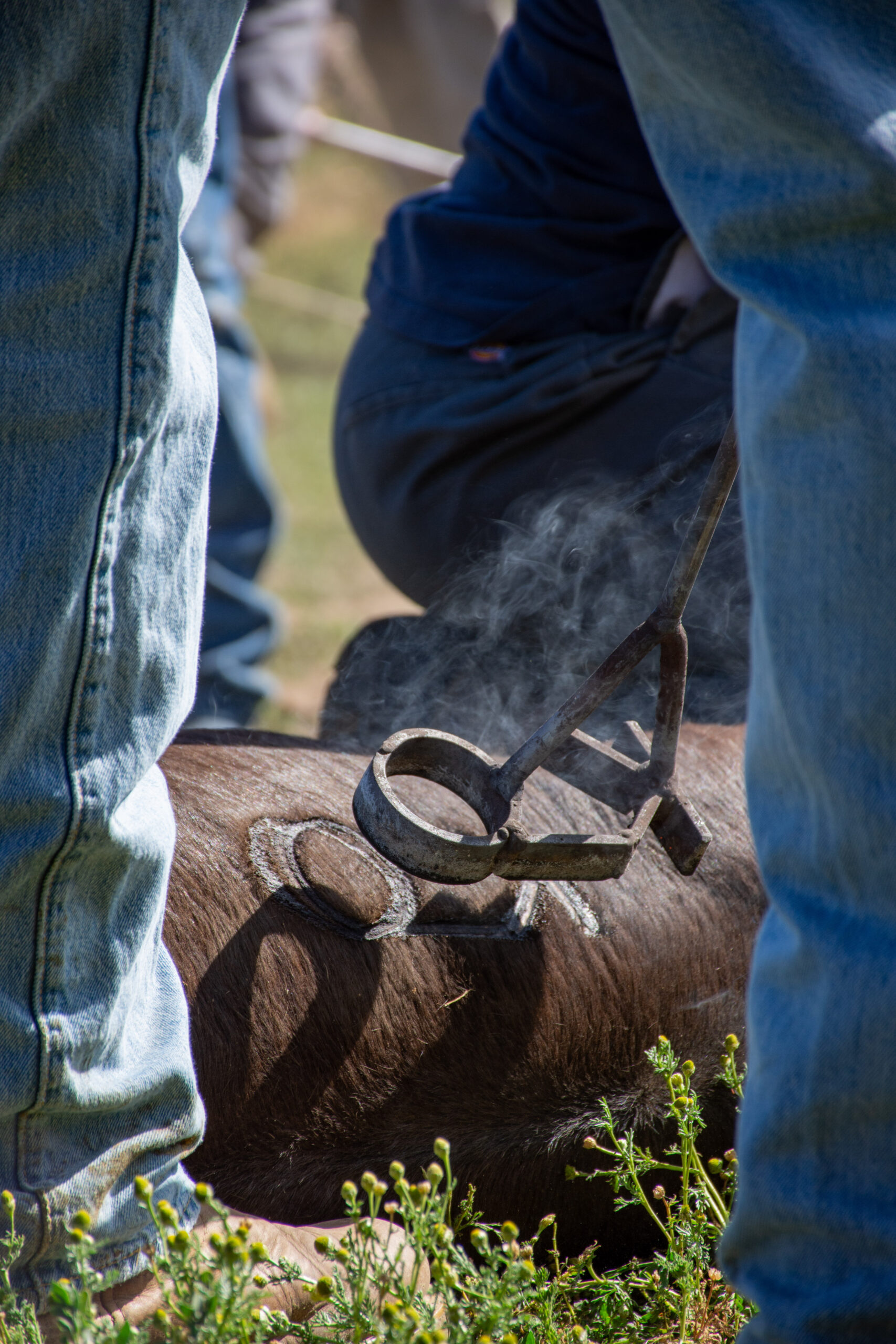
By: Christopher Dysinger
According to the Code of the West a man who has integrity is one who rides for the brand. If you are unfamiliar with cowboy parlance this phrase is used to describe being loyal to the outfit you work for. Cowboys were, “intensely loyal to the outfit they were working for and would fight to the death for it. They would follow their wagon boss through hell and never complain.” -Teddy Blue Abbot. Riding for the brand means being loyal and when I consider what it means to be loyal I am reminded of the words of the Lord Jesus to His disciples in Matthew 16:24, “Then said Jesus unto His disciples, If any man will come after Me, let him deny himself, and take up his cross and follow Me.” To me, to take up the cross and follow the Lord is the epitome of what it means to ride for the brand.
When you place your trust in the Lord Jesus you are signing on to His outfit, to speak the language of the West. When you called upon the name of the Lord Jesus by faith, He saved you and from this point you are riding for His brand. In taking up your cross and following Him you have pledged to be loyal, and this means you face any hardship or trial like a cowboy on the trail moving the herd. Any complaint must be swallowed in the same way you would swallow a cup of coffee. When I hear our faith and loyalty to the Lord Jesus put into these terms it stirs something within me that moves me to keep right on riding for the brand.
Louis L’amour wrote, “Riding for the brand was an expression of loyalty to a man’s employer or the particular outfit he rode for. It was considered a compliment of the highest order in an almost feudal society. If a man didn’t like a ranch or the way they conducted their affairs he was free to quit, and many did; but if he stayed, he gave loyalty and expected it. A man was rarely judged by his past only by his actions. Many a man who came west left things behind him he would rather forget, so it was not the custom to ask questions. Much was forgiven if a man had courage and integrity and if he did his job. If a man gave less than his best, somebody always had to pick up the slack, and he was not admired.” It is the same when a person gives his or her heart to Jesus.
When you come to the Lord Jesus you are not judged by your past. When you come to the Lord Jesus, repenting of sin and seeking forgiveness, everything from your past is left behind. All will be forgiven. 1 John 1:9 reads, “If we confess our sins, He is faithful and just to forgive us our sins, and to cleanse us from all unrighteousness.” When you place your faith in the Lord Jesus you are promising to be loyal and in return you will receive the same. He has promised that He will never leave us or forsake us. When you walk with the Lord Jesus through life you are indeed, “riding for the brand.”
“Riding for the brand” is not just an expression of loyalty nor is it just an expression of pride, it is also an expression of love. When a cowboy claims to be riding for the brand, he is telling any other outfit who may seek his loyalty, that he cannot give it, because he has given his word to another. It is the same when we pledge our faith and loyalty to the Lord Jesus. If any would call us away from Christ we cannot go, because we are riding for the brand.
The End
This article is an excerpt from the book, The Bible and the Code of the West by Dr. Christopher Dysinger.
Country Lifestyle
Farm Dogs & Table Scraps
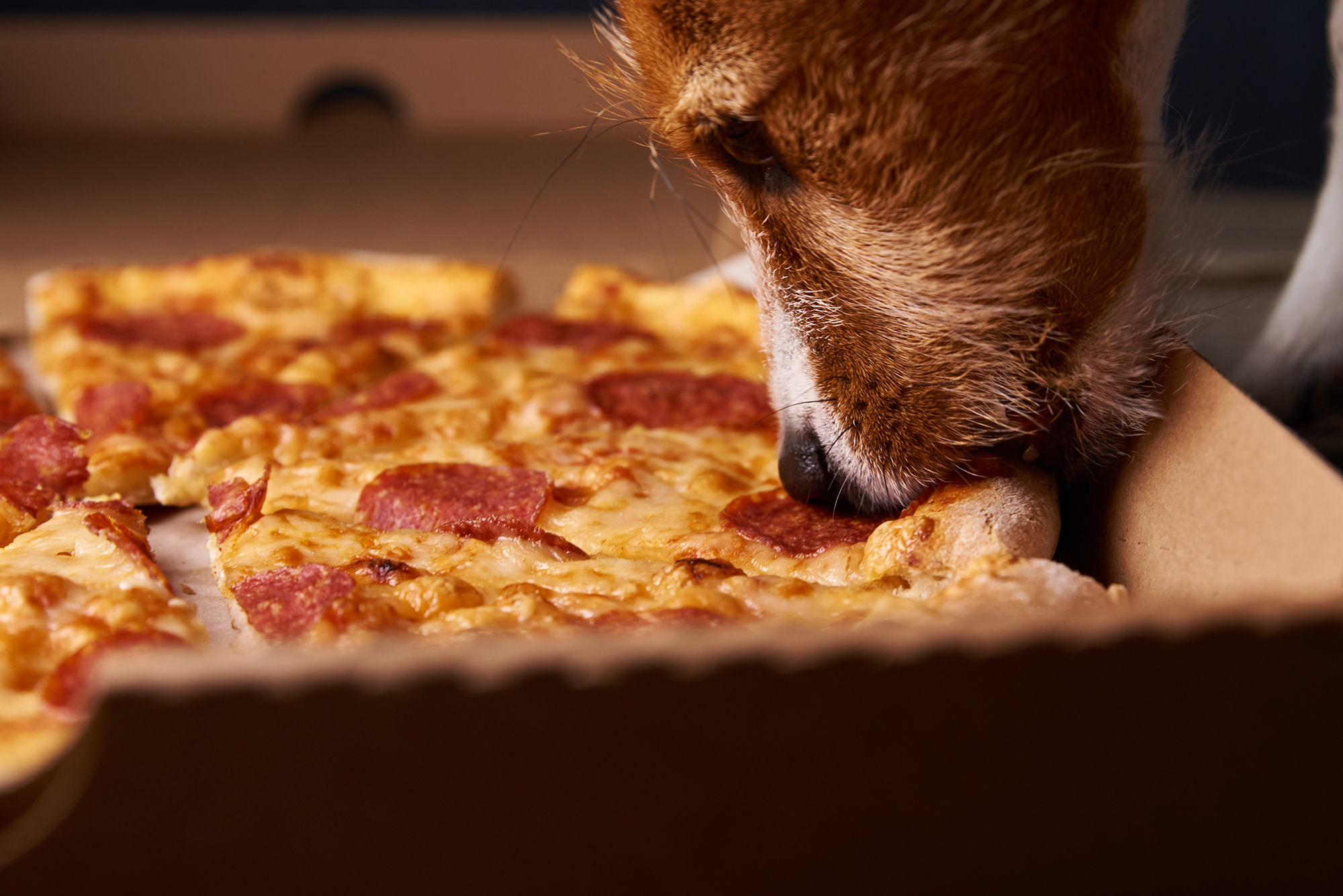
What’s Safe and What’s Not?
Growing up on a farm, our dogs were tough. They roamed the pastures, slept under the barn, and ate just about anything they could get their paws on—whether we meant for them to or not. I’ll admit, I never thought twice when one of our old cow dogs snatched a biscuit off the table or licked up a spill from the barn floor. I’ve even seen a dog steal a whole rib bone off a plate and trot off like he’d won the lottery. And somehow, they always seemed fine.
But here’s the thing—just because they survived doesn’t mean it was safe. For every farm dog that lucked out, there’s another that wasn’t so fortunate. Some human foods can be downright toxic to dogs, and a little bit of bad luck (or a smaller, more sensitive dog) can turn a harmless snack into an emergency.
Common toxic foods lying around the farmhouse
If you’ve got a farm dog—or any dog, really—you need to be aware of the dangers lurking in everyday foods. Some of the biggest culprits include:
Chocolate – The darker it is, the worse it is. Even a little can cause vomiting, seizures, or worse.
Grapes & Raisins – No one’s exactly sure why, but they can cause kidney failure fast.
Onions & Garlic – In large enough amounts, these can destroy red blood cells, leading to anemia.
Xylitol (Found in Sugar-Free Gum & Candy) – This artificial sweetener can send a dog’s blood sugar crashing and cause liver failure.
Alcohol – Even small amounts can be deadly to dogs, affecting their nervous system much more than it does ours.
Bones from Cooked Meat – While not necessarily toxic, they can splinter and cause serious internal injuries.
Macadamia Nuts – These can lead to weakness, vomiting, and even paralysis in dogs.
What to do if your dog eats something toxic
First, don’t panic—but don’t ignore it either. If you know your dog ate something dangerous, call your vet immediately. They can tell you whether to induce vomiting or if it’s something that requires urgent care. If it’s after hours, contact the ASPCA Animal Poison Control Center (888-426-4435) or the Pet Poison Helpline (855-764-7661).
Prevention is always the best medicine, so keep toxic foods out of reach. That might mean keeping the trash can secured, making sure kids don’t slip the dog a treat under the table, or just being more mindful of what’s left on the counter.
Our farm dogs might have been lucky, but luck isn’t a great strategy when it comes to their health. A little awareness goes a long way in making sure they stay happy, healthy, and ready for the next day’s work.
For more information
ASPCA Animal Poison Control: www.aspca.org/pet-care/animal-poison-control
Pet Poison Helpline: www.petpoisonhelpline.com
Visit www.akc.org/expert-advice/nutrition/foods-your-dog-should-never-eat
Country Lifestyle
Summer Squash and Corn Chowder

By Lacey Vilhauer
Total time: 40 minutes
Servings: 6-7
Ingredients
- 6 slices bacon, cooked and crumbled and 1 1/2 Tbsp rendered bacon fat reserved
- 1 1/2 lbs yellow squash, chopped (about 3 medium)
- 2/3 cup thinly sliced celery
- 1 cup diced onion
- 1 Tbsp flour
- 2 cloves garlic, minced
- 2 3/4 cup milk (I used 1%)
- 5 cups canned or fresh cut corn (from about 6 ears corn), divided
- 1/2 cup heavy cream
- 1 1/2 tsp chopped fresh thyme (or 1/2 tsp dried)
- 3/4 tsp salt, then more to taste
- 1/4 tsp freshly ground black pepper, then more to taste if desired
- 3/4 cup shredded cheddar cheese, for serving
- Chopped green onion for garnish (optional)
Instructions
Heat 4 tsp reserved bacon fat in a large pot over medium-high heat. Add celery and onion and sauté 2 minutes then add the squash.
Saute until tender, about 6 minutes, adding in garlic and flour during last 2 minutes of sauteing. Reduce heat slightly.
Add 1 1/2 cups milk, 2 cups of the corn, thyme, salt and pepper to the sauteed veggies.
To a blender add remaining 3 cups of corn, remaining 1 1/4 cups milk and the cream. Process in blender until nearly smooth (about 30 seconds).
Add pureed mixture to pot and stir to blend. Cook until mixture reaches a light boil.
Serve warm with shredded cheese, crumbled bacon and sliced green onions if desired.
-

 Attractions8 years ago
Attractions8 years ago48 Hours in Atoka Remembered
-

 Country Lifestyle9 months ago
Country Lifestyle9 months agoJuly 2017 Profile: J.W. Hart
-

 Country Lifestyle9 years ago
Country Lifestyle9 years agoThe House a Treasure Built
-

 Country Lifestyle4 years ago
Country Lifestyle4 years agoThe Two Sides of Colten Jesse
-

 Outdoors7 years ago
Outdoors7 years agoGrazing Oklahoma: Honey Locust
-

 Equine8 years ago
Equine8 years agoUmbilical Hernia
-

 Outdoors5 years ago
Outdoors5 years agoPecan Production Information: Online Resources for Growers
-

 Farm & Ranch7 years ago
Farm & Ranch7 years agoHackberry (Celtis spp.)

